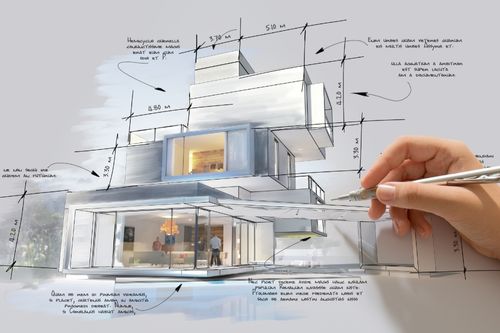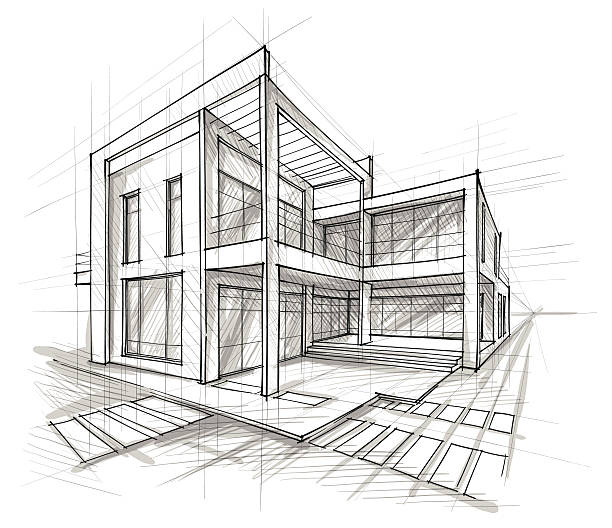An Extensive Introduction of Architectural Styles and Their Impact on Modern City Preparation and Growth
Building designs have actually long functioned as a mirror to the social worths and technical advancements of their time, playing a vital duty fit modern-day city preparation and development. From the grandeur of Neoclassicism to the practical technique of Brutalism, each style has actually introduced special principles that affect metropolitan aesthetics and capability. As modern obstacles emerge, consisting of sustainability and area requirements, comprehending these historic structures comes to be crucial. The resulting discussion not only notifies future design methods yet likewise increases important concerns about the equilibrium between heritage and advancement in our developing urban landscapes.
Historical Review of Architectural Styles

As societies transitioned through the Middle Ages, Gothic style arised, defined by its verticality and elaborate detailing, matching the spiritual ambitions of the age. The Renaissance marked a revival of timeless suitables, merging art and style in ingenious manner ins which influenced succeeding styles across Europe.

Today, architectural styles remain to evolve, driven by globalization and sustainability worries, reflecting a dynamic interaction in between heritage and development. This historic overview underscores the relevance of architecture as a mirror of societal evolution and as a stimulant for city development.
Secret Architectural Styles Explained
The variety of building styles reflects the myriad influences that form our constructed environment, each symbolizing unique features and social importances. Secret architectural styles consist of Classic, Gothic, Baroque, Innovation, and Postmodernism, each standing for unique historic contexts and aesthetic philosophies.
Classical design, rooted in ancient Greece and Rome, highlights balance, proportion, and using columns (cda architects). In comparison, Gothic design, prospering between Ages, is identified by sharp arcs, ribbed vaults, and flying buttresses, producing a heavenly quality in cathedrals. Baroque architecture, emerging in the 17th century, is marked by majesty, fancy decoration, and a dynamic interplay of light and darkness
Innovation, which got energy in the very early 20th century, focuses on function over form, utilizing new products like steel and glass to develop minimal structures. Postmodernism, reacting against the austerity of Innovation, accepts eclecticism and historical reference, frequently incorporating spirited aspects and paradox.

Influence On Urban Preparation
Fit the growth of cities, architectural designs considerably affect metropolitan preparation decisions. The selection of architectural design typically determines the appearances, performance, and total character of city environments. As an example, modernism, with its emphasis on minimalism and capability, encourages open areas and the integration of innovation, forming city layouts that prioritize performance and ease of access. Conversely, standard designs may emphasize historical conservation, bring about urban designs that preserve social heritage and advertise pedestrian-friendly settings.
Additionally, architectural styles can impact zoning policies and land utilize policies. Urban planners should think about the prevailing architectural trends when designing districts, ensuring that new developments harmonize with existing frameworks. This factor to consider cultivates natural metropolitan landscapes and improves community identity.
The implementation of details building designs can likewise influence socioeconomic factors within a city. For example, premium modern styles may attract wealthy homeowners and services, causing gentrification, while much more budget friendly real estate remedies may focus on functional and lasting read this post here designs to fit varied populations. Eventually, the interaction in between building styles and urban preparation develops dynamic cities that reflect both historic context and contemporary needs, forming the lived experiences of their citizens
Sustainability and Modern Architecture
Building styles play an essential duty in resolving contemporary challenges, particularly in the world of sustainability. As urban locations broaden and environmental problems heighten, modern architecture increasingly welcomes sustainable style principles that focus on energy effectiveness, resource conservation, and very little ecological influence.
Contemporary architectural activities, such as biophilic design and eco-friendly style, advocate for frameworks that harmonize with their environments, utilizing natural materials and advertising biodiversity. These designs typically include renewable energy resources, such as photovoltaic panels and wind turbines, to decrease dependence on fossil gas and lower carbon footprints.
Additionally, the assimilation of advanced innovations, such as clever building systems, improves power monitoring, maximizing resource usage while making sure owner convenience. Innovative water management methods, consisting of rain harvesting and greywater recycling, more add to lasting city settings.
Especially, sustainability expands past ecological problems; it incorporates social and financial measurements too. By promoting neighborhood wellness and promoting inclusivity, modern architectural designs straighten with lasting advancement goals. As a result, the development of architectural practices proceeds to form durable cities that not only meet the needs of the existing yet likewise protect the future for generations to come.
Community Involvement in Layout
Neighborhood engagement in design serves as a critical bridge between architects and the populaces they serve, ensuring that the constructed atmosphere reflects the requirements and goals of its customers. This collective process welcomes community participants to contribute their insights and choices, fostering a feeling of ownership and duty toward the rooms they occupy.
Effective neighborhood engagement uses various approaches, such as workshops, surveys, and public discussion forums, to gather varied perspectives. These strategies help with a two-way discussion, allowing designers to understand regional contexts while encouraging citizens to voice their issues and needs. This inclusivity not only boosts the style top quality but additionally promotes social equity by attending to the unique difficulties encountered by marginalized groups.
Additionally, community interaction can cause cutting-edge remedies that may not emerge in a typical style process. By incorporating regional knowledge informative post and cultural values, engineers can create areas that reverberate even more deeply with customers, enhancing usability and sustainability. Eventually, focusing on neighborhood involvement in layout processes results in environments that nurture social interactions, support wellness, and enhance area connections, click here for info therefore playing a pivotal role in shaping contemporary metropolitan landscapes.
Final Thought
Building styles have actually exceptionally influenced contemporary city planning and advancement, showing progressing cultural and technological contexts. The combination of historical appearances with modern demands cultivates city settings that focus on sustainability and neighborhood interaction. As cities continue to grow and adapt, the recurring discussion in between architectural heritage and modern design principles will certainly continue to be necessary in producing inclusive, dynamic spaces that boost lifestyle and promote social equity. The future of urban development depend upon this unified balance.